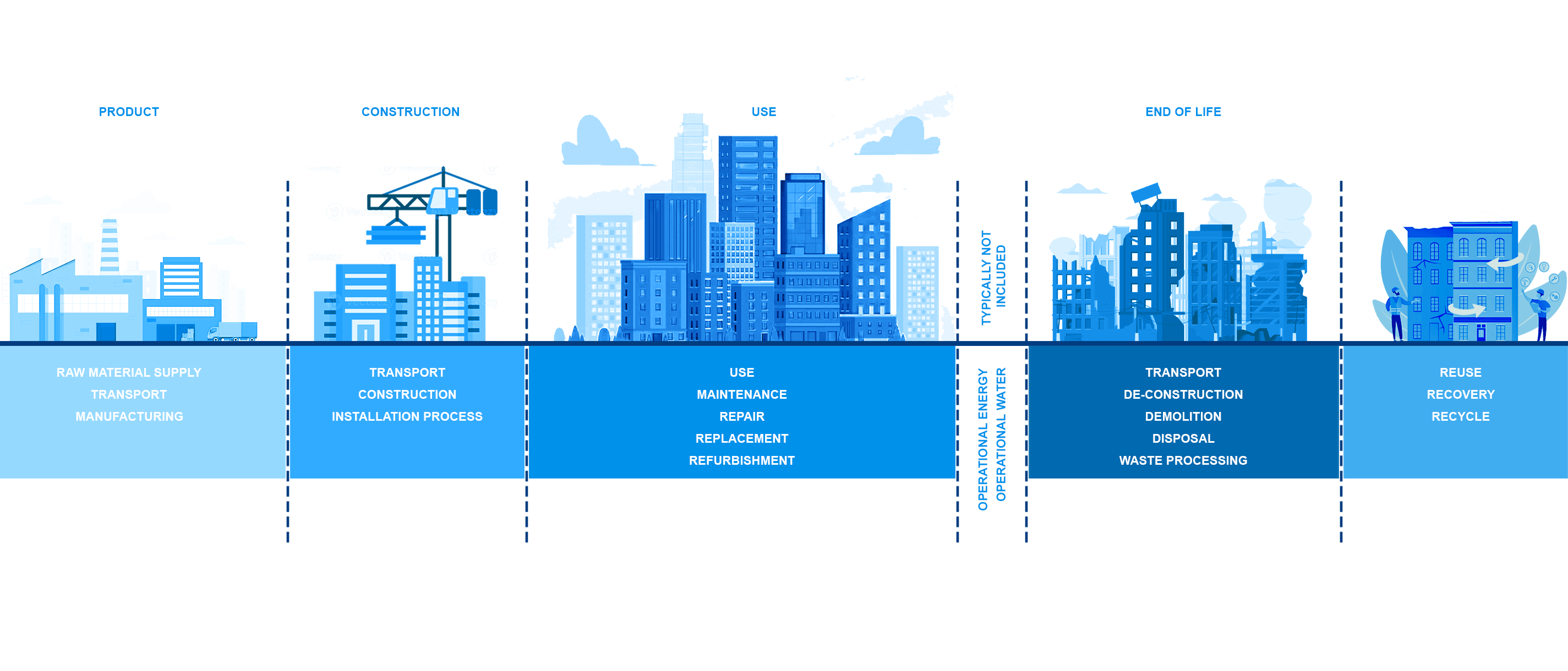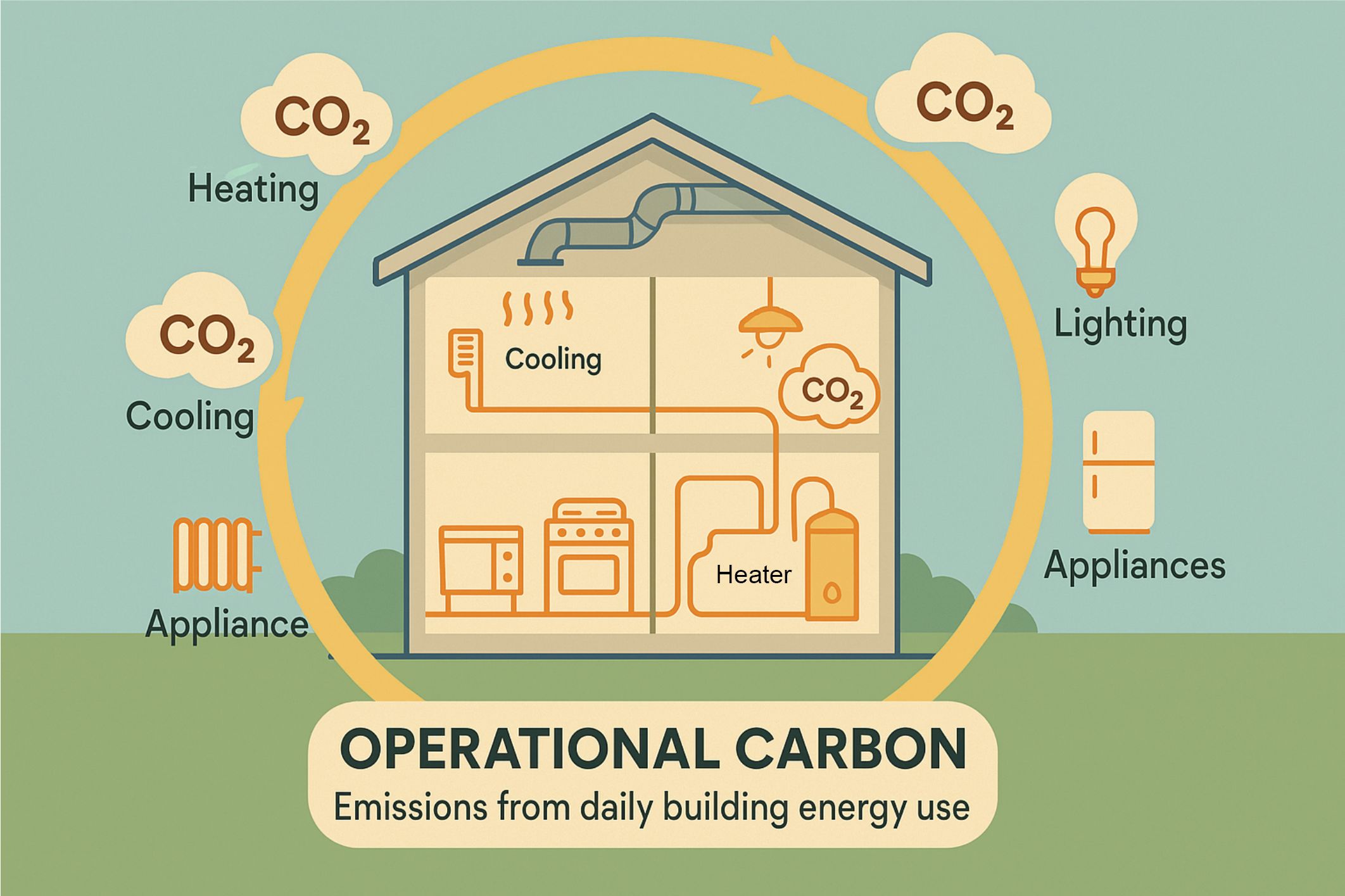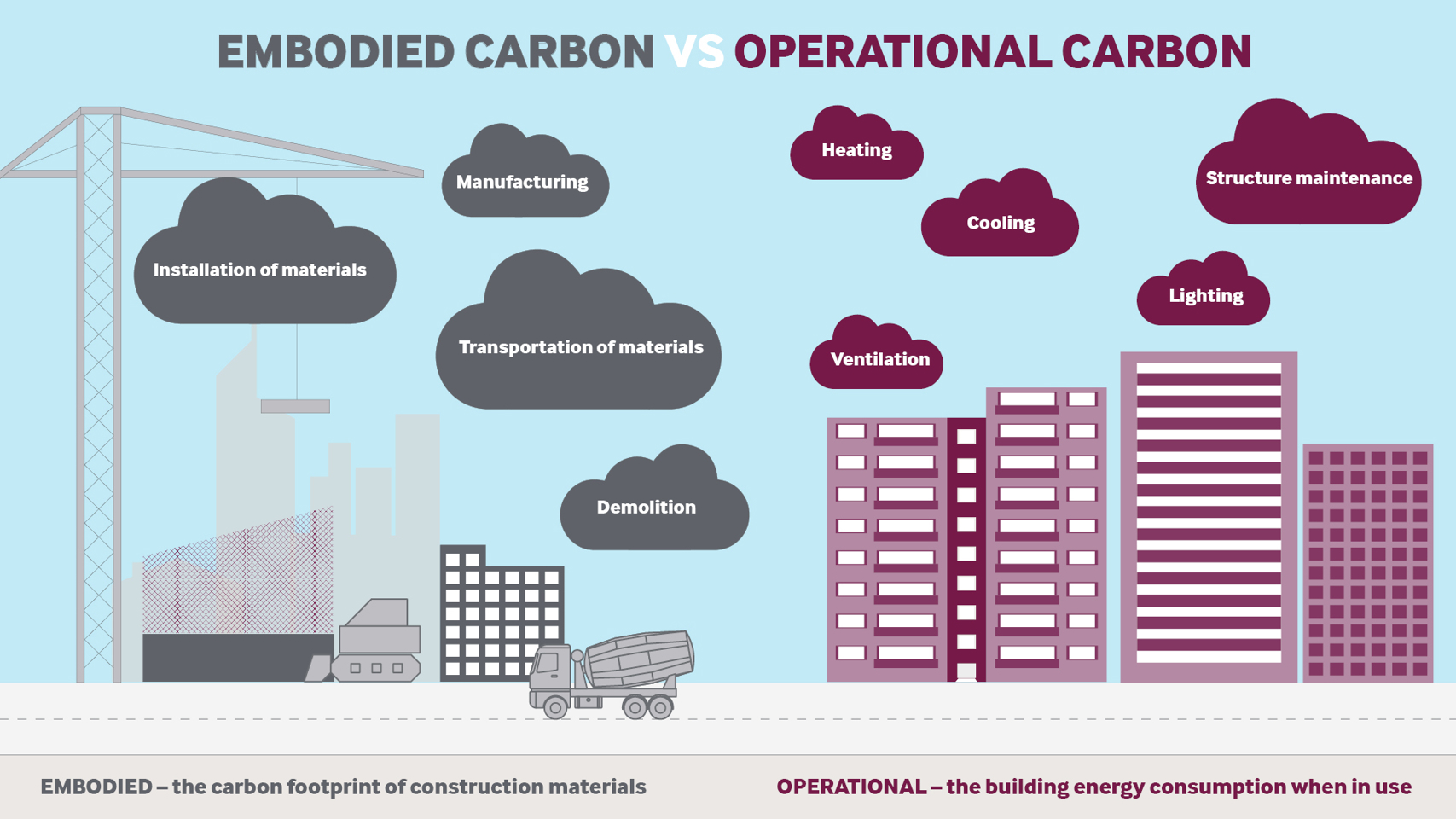Part - The Carbon You See and the Carbon You Don’t
2025.03.21

When we think about carbon emissions, cars and factories might come to mind first. But buildings are one of the largest contributors to climate change, responsible for nearly 40% of global carbon emissions. This isn’t just about the energy they use to keep the lights on or the heat running. It’s also about the hidden environmental cost of creating them, from mining raw materials to manufacturing and transporting building components.

Every building has a carbon footprint, and it comes from two main sources: operational carbon and embodied carbon. Operational carbon is the CO2 released from everyday energy use, like heating and cooling. Embodied carbon is the quantity of CO2 released by a building's initial construction through manufacturing, transporting and assembling materials and components.
For example, heating a home burns fossil fuels, releasing operational carbon, while making concrete releases carbon through energy intensive production and chemical reactions. While operational carbon can be reduced over time through energy-efficient systems or renewable energy sources, embodied carbon is locked in from the start, making early design choices critical for minimizing a building’s total carbon footprint.
The scale of the problem is significant. Buildings contribute nearly twice as much to global carbon emissions as transportation, which only accounts for about 20% overall. This means architects, builders, and even homeowners have a huge role to play in reducing emissions. By addressing both operational and embodied carbon, we can make a meaningful impact on climate change.

For clients, this is an opportunity to make smarter, more sustainable choices. Energy efficient systems and renewable energy can cut operational carbon, while low carbon materials and smarter design can slash embodied carbon. The result? Buildings that are not only better for the planet but also more cost effective and resilient in the long run. By prioritizing sustainability, clients can future proof their investments and contribute to a healthier environment.
Next, we’ll explore the challenges of building materials and how they contribute to the carbon footprint of our structures.


